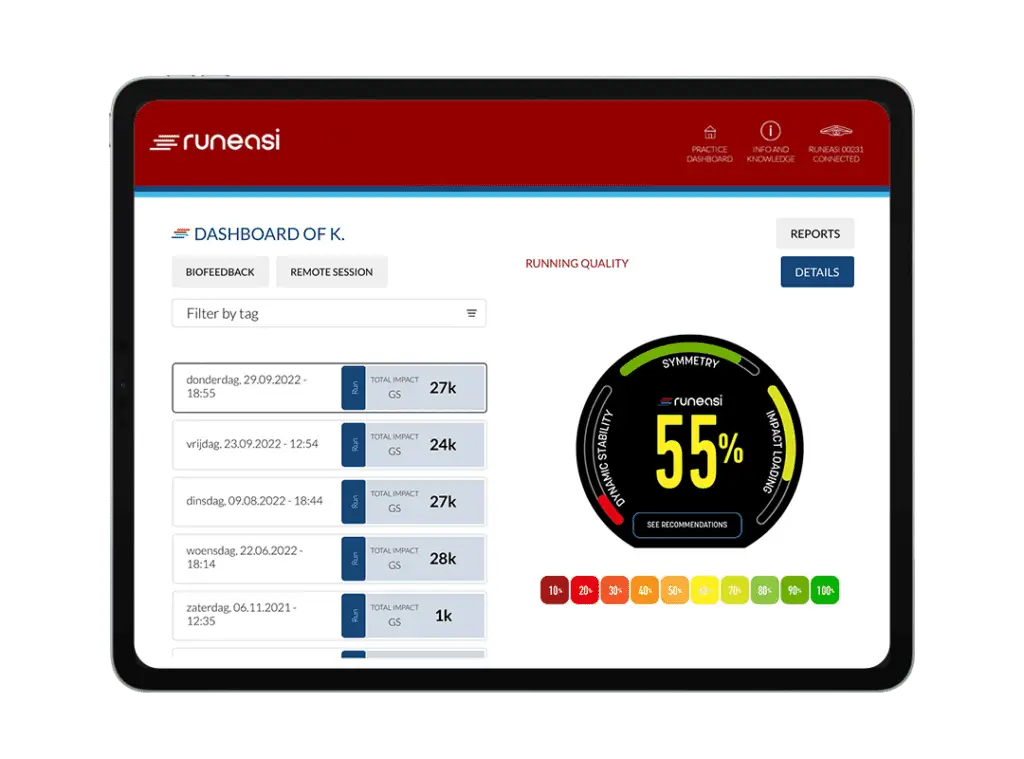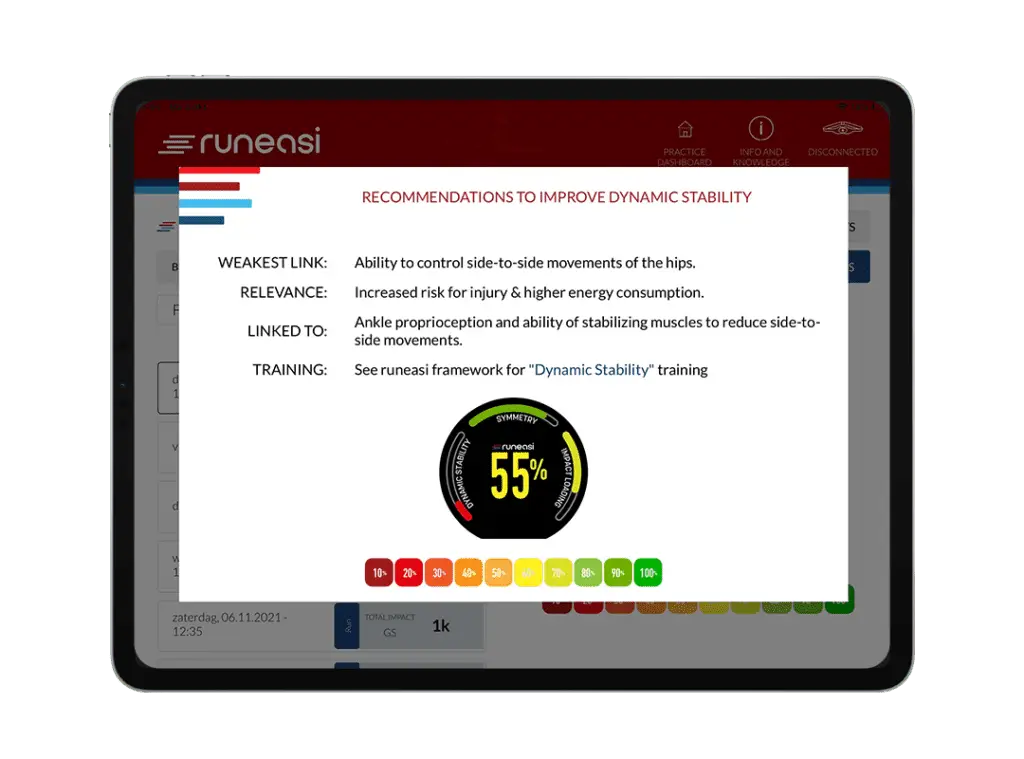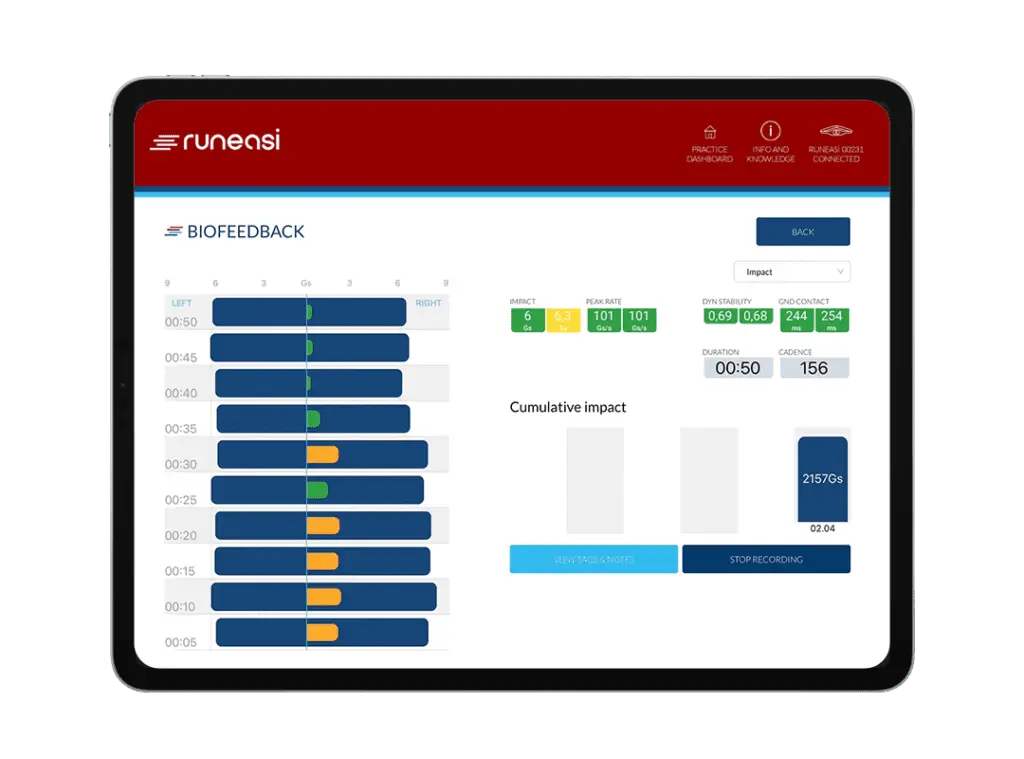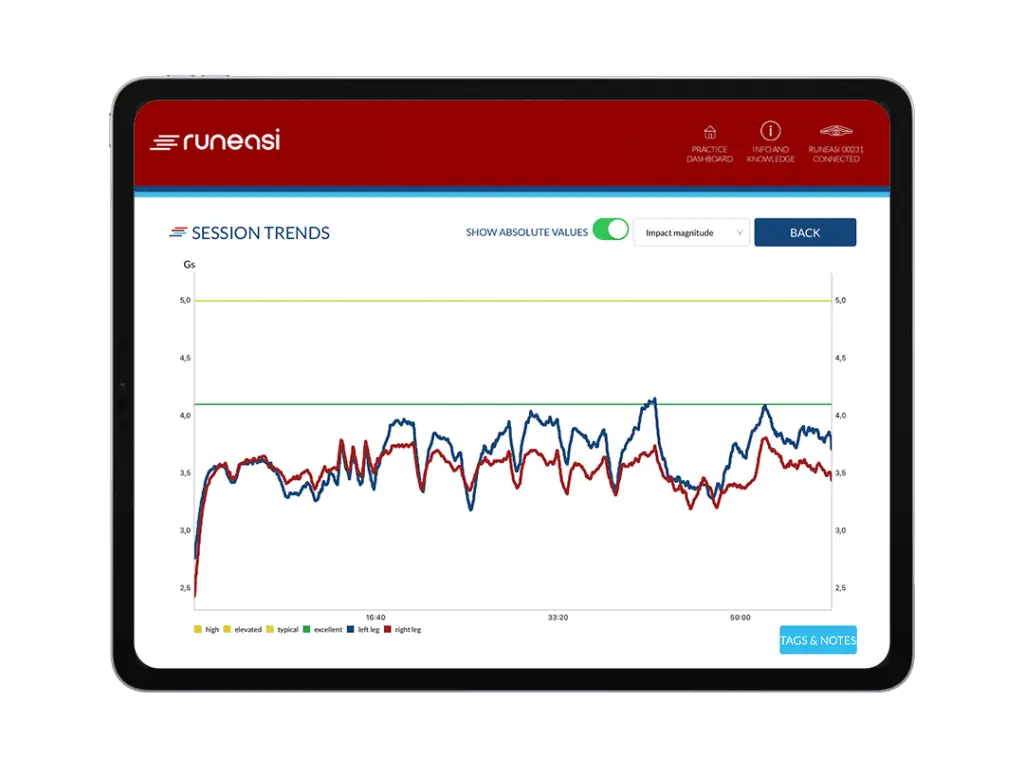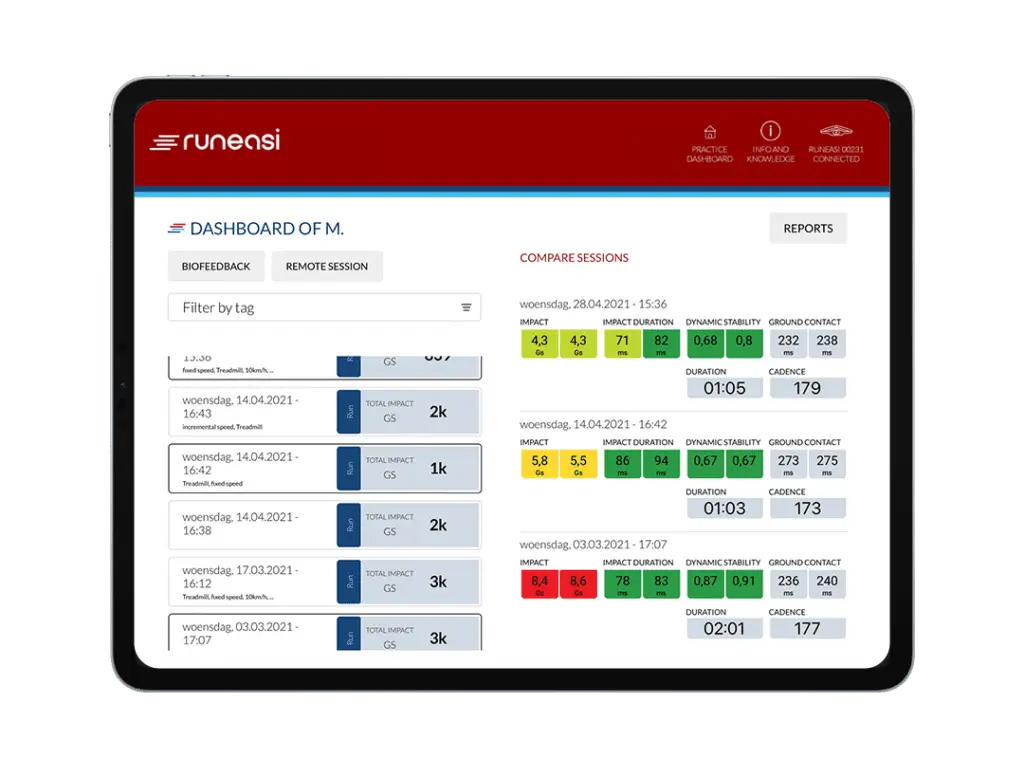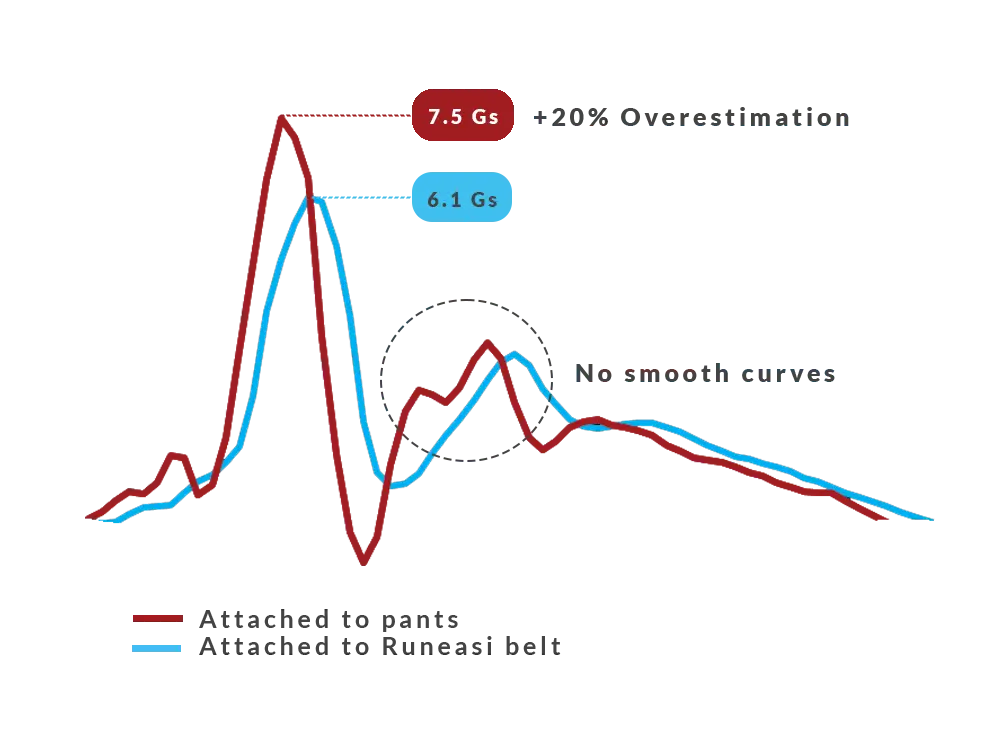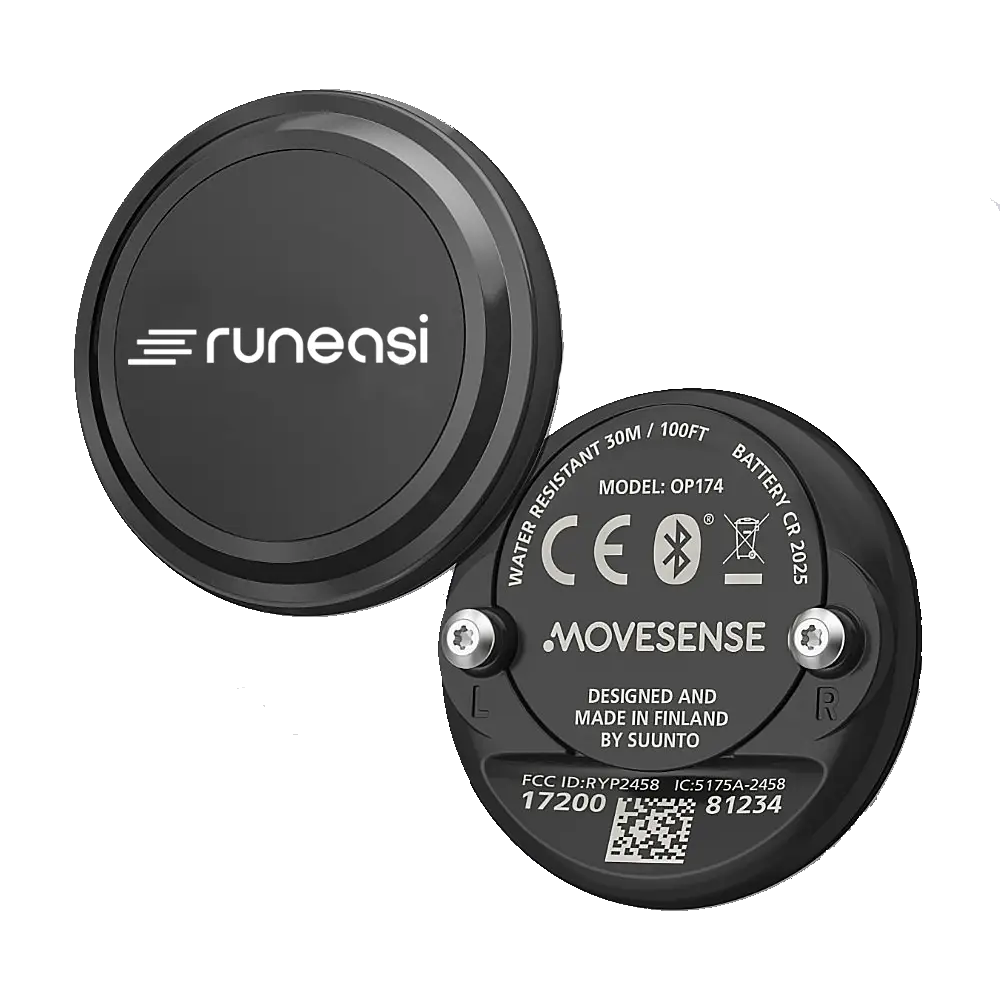How to improve running quality?
How to improve your running quality? Your overall running quality depends on three key parameters: dynamic stability, impact loading, and symmetry. To make real progress, these elements must be developed together through a structured and progressive approach. At Runeasi, we use a three-phase framework designed to build strength, stability, and coordination step by step, ensuring […]
How to improve dynamic stability symmetry?
How to improve your dynamic stability symmetry? This section highlights how to improve your dynamic stability using specific exercises. If you want a deeper understanding of what dynamic stability is and why it matters, you can explore our dedicated article. Dynamic stability is largely determined by the strength and coordination of your stabilizing muscles (primarily […]
How to improve dynamic stability?
How to improve your dynamic stability? This section highlights how to improve your dynamic stability using specific exercises. If you want a deeper understanding of what dynamic stability is and why it matters, you can explore our dedicated article. Dynamic stability is largely determined by the strength and coordination of your stabilizing muscles (primarily the […]
How to improve impact loading symmetry?
How to improve your impact loading symmetry? This section highlights how to improve your impact loading using specific exercises. If you want a deeper understanding of what impact loading is and why it matters, you can explore our dedicated article. Impact loading is largely determined by the strength and coordination of the lower limb muscles […]
How to improve left-right differences (EN) ON
symmetry Learn about: What is symmetry? Symmetry refers to left vs right balance in biomechanical parameters measured by Runeasi. Poor symmetry can be a cause or consequence of injury and plays a role in running efficiency. Therefore, It’s important to address left vs right differences and work on these imbalances. It is important to note […]
How To Improve Impact Loading (ENG) ON
impact loading Learn about: What is Impact loading? Impact loading refers to how (much) we load our body while running. It encompasses two crucial parameters. Impact magnitude refers to the degree of impact exerted on your body while running. Impact duration measures how fast the impact travels through your legs. This serves as an essential […]
How to improve Dynamic Stability (JP)
動的安定性 目次 : 動的安定性とは? これは腰部の左右の揺れを測定し、ランニング時の腰部の安定性を評価したものです。オレンジや赤など低いスコアは腰部の制御力が弱いことを示しています。姿勢を安定させる筋肉に負荷がかかりやすくなっているため、ランニング効率(エネルギー消費率)が低下したり、オーバーユース障害(内側脛骨ストレス症候群、ITB症候群など)を引き起こしたりする可能性があります。 腰部の左右の動きを示した図 動的安定性を改善するには 動的安定性トレーニングは、骨盤を安定させる筋肉(腹筋、背筋、臀筋など)を強化するトレーニングです。段階的なエクササイズを通じて、特定の筋肉をターゲットにした静的な動きから、連動した動的な動きへとつなげ、ランニング時の安定性向上を図ります。 さまざまなタイプのエクササイズを組み合わせたトレーニングプランを立てるとよいでしょう。特定の部位にフォーカスする静的エクササイズでは、身体を安定させる筋肉の強化(持久力)を目指します。対照的に、動的な反応エクササイズでは筋肉の連動性向上を目指します。 一つの部位にフォーカスする静的エクササイズと動的な反応エクササイズをトレーニングプランに取り入れると、身体が強化されてバランスも整い、ランニング効率も高まるでしょう。ぜひさまざまなメニューに取り組み、トレーニング効果を高めてください。 エクササイズ例 * ここで紹介するエクササイズは一例であり、すべての人に適しているわけではありません。これらのエクササイズがあなたのニーズや身体能力に適しているかどうかについて、Runeasiの専門スタッフにご相談されることをおすすめします。 分離的/静的安定性 ― 殿筋群 エクササイズ 運動1 運動2 運動3 運動4 分離的/静的安定性 ― 腹筋群 エクササイズ 運動1 運動2 運動3 運動4 動的安定性 エクササイズ 運動1 運動2 運動3 運動4 反応的安定性 エクササイズ 運動1 運動2 運動3 運動4
How to improve Dynamic Stability (ENG) ON
Dynamic stability Learn about: What is dynamic stability? This parameter measures the side-to-side wobble of your hips and provides insight into your ability to stabilize your hips while running. A lower score, shown as orange or red, indicates poor hip control which increases the work of your stabilizing muscles. This reduces your running efficiency (or […]
How to improve left-right differences (JP)
対称性 目次 : 対称性とは? 対称性とは、Runeasiが測定した生体力学的パラメータにおける左右のバランスを指します。対称性の崩れはケガによって引き起こされることがあります。また、対称性が崩れることでケガしやすくなったり、ランニング効率に影響が出たりします。そのため、左右の違いを改善し、バランスの崩れを正すことが重要です。 ここで注目したいのが、故障した脚のスコアの高さ、低さは脚の特定の状態を示している場合がある点です。これを理解するには、脚の状態には過負荷歩行パターンと保護的歩行パターンの2種類があることを把握する必要があります。 過負荷歩行パターン 過負荷歩行パターンは、故障した脚のスコアが低いときの状態を指します。この場合、左右アンバランスはケガのもとになる可能性があります。また、左右アンバランスはケガが原因で生じることもあります。身体的な頑強さとランニング効率を高めるには、左右アンバランスの改善が欠かせません。 保護的歩行パターン 保護的歩行パターンは、故障した脚の方がもう片方よりパフォーマンスが良い状態を指します。この場合の左右アンバランスは、故障した脚の負荷を減らすために生じることが大半です。左右バランスを正し、故障した脚が再び負荷に耐えられるようにすることが重要です。 対称性を改善するには 対称性を高めるには、通常のトレーニングに片脚エクササイズを加えることが有効です。弱い方の脚を意識しながら負荷を加え、エクササイズの量(レップまたはセット回数)を増やすとよいでしょう。 左右アンバランスを改善するのに必要なパラメーターを選択してください。 衝撃荷重 動的安定性
How To Improve Impact Loading (JP)
衝撃荷重 目次 : 衝撃荷重とは 衝撃荷重はランニング時に身体が耐えられる負荷のことです。これには2つの主要パラメーターがあります。 1つ目は衝撃度。これは、ランニング中に身体にかかる衝撃の度合いを示します。 2つ目は衝撃時間。これは衝撃が脚に伝わる速度を測ったもので、衝撃を効率的に吸収する能力を示す重要な指標です。衝撃時間が長ければ、衝撃吸収力が高いと言えます。衝撃吸収能力が高く、身体が受ける衝撃が小さいと、下肢に効率よく負荷を分担させられるほか、オーバーユース障害(疲労骨折、ランナー膝)のリスクを減らせます。 *衝撃度と衝撃時間を表した図 衝撃荷重を減らすには 衝撃度は、下肢筋のキャパシティおよびそれぞれの下肢筋がどう連動して衝撃を吸収するかによって大きく変わります。 ランニング時の衝撃は短い時間枠(±20~130ミリ秒)で生じます。 そのため筋肉を(非常に)短時間で活性化させることが重要です。 ジャンプ(プライオメトリック)トレーニングは、素早く筋肉を活性化させるのに有効です。 このトレーニングをこなすことで、ランニング時の衝撃に耐えやすくなるでしょう。 筋肉や腱の損傷リスクを最小限に抑えるには、少なくとも4~6週間は下肢の基本トレーニングに取り組むとよいでしょう。さらにランニングに特化したドリルを組み合わせるとより効果的です。 その後、衝撃トレーニング(ボックスからジャンプしてソフトに着地)や弾道運動(例:繰り返し行うスプリットスクワットジャンプ)を行うと、弾力性の向上が期待できます。 エクササイズ例 * ここで紹介するエクササイズは一例であり、すべての人に適しているわけではありません。これらのエクササイズがあなたのニーズや身体能力に適しているかどうかについて、Runeasiの専門スタッフにご相談されることをおすすめします。 筋力容量 エクササイズ 運動1 運動2 運動3 運動4 ショックエクササイズ エクササイズ 運動1 運動2 運動3 運動4 バリスティックエクササイズ エクササイズ 運動1 運動2 運動3 運動4 プライオメトリクス エクササイズ 運動1 運動2 運動3 運動4

